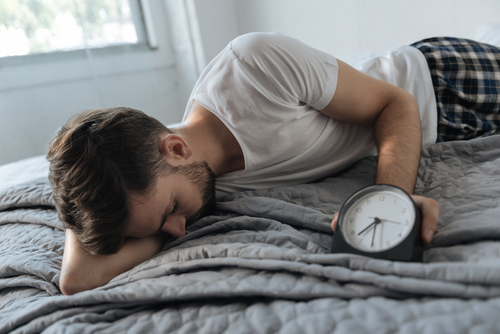Poor Sleep Most Common in Patients with Central Parkinsonian Pain, Study Finds

People with generalized pain related to their Parkinson’s are prone to disturbed nighttime sleep, a reason these two disease symptoms — central parkinsonian pain and poor sleep — are common together and may imply shared mechanisms, a study reports.
The study, “Sleep disturbances in Parkinson’s disease are associated with central parkinsonian pain,” was published in the Journal of Pain Research.
Most Parkinson’s patients experience disease-related non-motor symptoms that often precede the onset of hallmark motor problems. Non-motor symptoms can include anxiety, mood changes, cognitive impairment, sleep disturbances and pain, all affecting patients’ quality of life.
Depending on its origin, pain in Parkinson’s can be classified into five distinct subtypes. One, called central parkinsonian pain, is believed to be the only subtype directly caused by the disease, resulting from abnormal pain information processing (the way the body perceives pain) that leads to pain sensations even though no anatomic or physiological reason can be found. As such, it is considered a neuropathic pain.
Evidence suggests pain is associated with sleep disturbances in a bidirectional manner, with pain disrupting sleep and sleep deprivation increasing pain. But the link between central parkinsonian pain and sleep disturbances has not been explored.
Researchers set out to identify predictors of sleep disturbances and to investigate the relationship between sleep disorders and pain in Parkinson’s disease.
Their study enrolled 229 people (122 men and 107 women, mean age 69) diagnosed with Parkinson’s and with a mean disease duration of nine years. Each had their level of sleep disruption, pain complaints, anxiety, depression, motor symptoms, and functional independence assessed by clinically validated scales.
Results showed that 33% of patients had clinically relevant sleep disturbances, 57% had motor fluctuations, and 71% experienced pain. “Of those with pain, 38 (24%) had central parkinsonian pain,” the study stated.
Patients with sleep disturbances experienced more pain and had more severe motor symptoms, lesser independence in daily activities, more evidence of anxiety and depression, and poorer quality of life.
Those with central parkinsonian pain were more likely to have disturbed sleep — even after considering the possible influence of motor symptoms, motor fluctuations, pain intensity, and symptoms of anxiety and depression — than were patients with other types of pain.
“The study results also demonstrate that the association between quality of sleep and pain in PD depends on pain subtype,” the researchers wrote. Musculoskeletal and dystonia-related pain “were the most common subtypes of pain … [but] only central parkinsonian pain was significantly related to an increased risk of sleep disturbances.”
General population studies show that sleep deprivation alters pain processing and increases sensitivity to pain, while a healthy nighttime sleep routine can reduce pain perception.
“The close relationship between central parkinsonian pain and sleep disturbances in PD [Parkinson’s disease] raises the possibility of common pathophysiological mechanisms,” the team concluded, adding this may relate to the loss of dopamine caused by the disease.
Further research is necessary to better understand the relationship between sleep disturbances and central parkinsonian pain, and may help doctors trying to manage these symptoms in patients.






